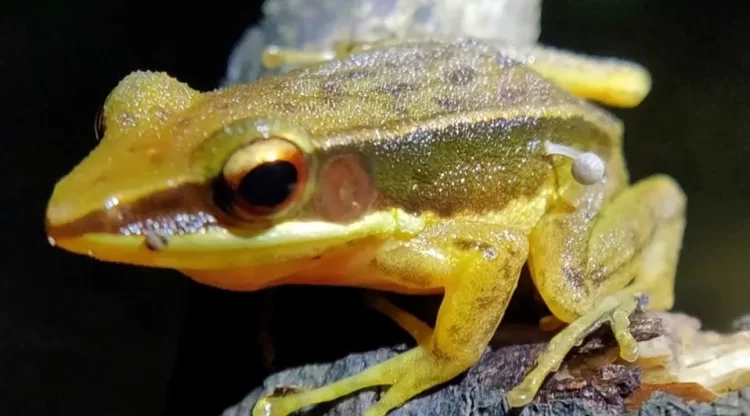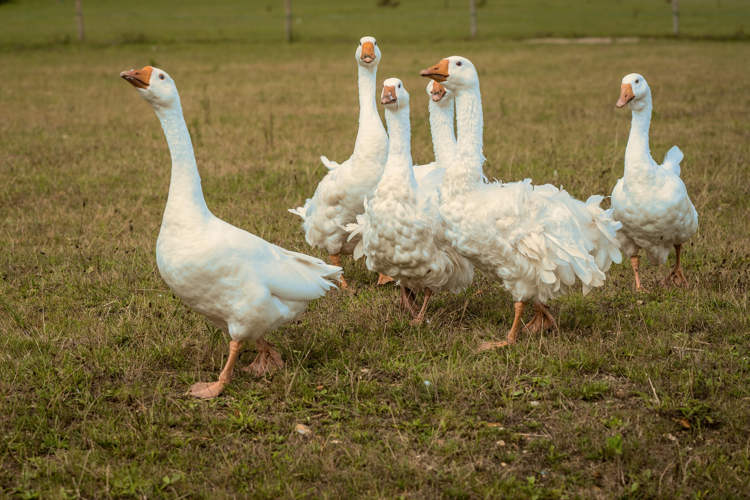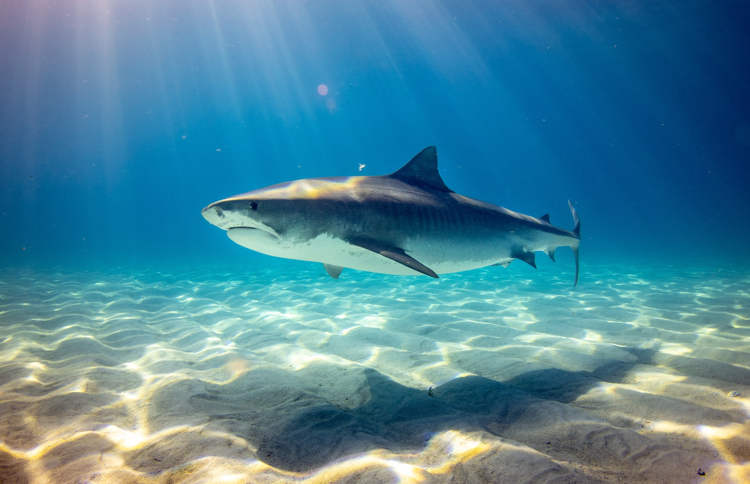Black Dog Turns Completely White Two Years After Being Diagnosed with Vitiligo

Over the course of two years, a black dog turned completely white due to vitiligo, a condition in which the skin and hair lose their natural pigment. In late 2021, at the age of two, Buster was diagnosed with vitiligo. The condition is caused by an autoimmune disease that causes areas of the skin, hair, […]
Woman Diagnosed with Noah’s Syndrome Kept 159 Cats in Her Apartment

A 68-year-old French woman diagnosed with Noah’s Syndrome has been given a one-year suspended sentence for keeping 159 cats and 7 dogs in her 80sqm (861sqft) apartment. The unnamed woman and her 52-year-old male partner got into a dispute with neighbors in their Nice apartment building because of the mess and filth caused by their […]
Influencer Slammed for Wearing Live Chick on Her Head as Bizarre Headgear

Filipino online influencer Abby Domer Salle has come under fire for alleged animal cruelty after being spotted wearing a live chick in a small metal cage on her head on the streets of Manila. Inspired by Japanese Kawaii culture, the so-called ‘duckling fashion’ has become very popular in Southeast Asia in the last few years. […]
Living Nightmare – The World’s Largest Leech Can Grow Up to 18 Inches Long

Haementeria ghilianii or the Amazonian Giant Leech is the world’s largest leech by quite a significant margin, growing up to 18 inches (46 cm) long. Leeches are found in wet and humid areas all over the globe, and while most are smaller than the average person’s index finger, a few can grow a lot longer […]
The World’s Largest Frog Is Teetering on the Brink of Extinction

The Goliath Frog, the largest living frog on Earth, is facing extinction after a 50% decline in population size in the last three generations, mainly due to human activity. The Goliath Frog certainly lives up to its name. Reaching up to 13 inches long (32 cm) from snout to vent, and weighing up to 7.2 […]
Stray Dog Finally Rescued After Living with a Box Stuck on His Head for Almost a Year

Bear, a stray Cane Corso that had been roaming around Alabama’s Gulf Coast for almost a year with a large box stuck on his head was recently caught and freed from his plastic trap. Bear’s story first made news headlines in January of this year, when it was covered by CBS affiliate, WKRG, following multiple […]
Instagram-Famous Feline Looks Like a Real-Life Cartoon Character

Four-year-old Fedya, a gray rescued cat from Russia, has become a social media sensation thanks to his funny permanently startled look. When Fedya’s owner, Natalya Zhdanova, found him in her backyard in 2020, she had no idea he would one day become an Instagram star with over 300,000 followers. At the time, she wasn’t even […]
Frog Smaller Than a Human Fingernail May Be World’s Smallest Vertebrate

The Brazilian flea frog (Brachycephalus pulex) measures only between 7 and 8 millimeters in length, which likely makes it the smallest vertebrate on Earth. In 2011, Mirco Solé, a researcher at the State University of Santa Cruz in Brazil, discovered the tiny Brazilian flea frog, an amphibian so small that it could comfortably fit on […]
Meet Rope Daddy, a Special French Bulldog Specimen Valued at $120,000

Rope Daddy is an exceptional specimen of Big Rope, one of the most sought-after varieties of French Bulldog, whose enviable genetic traits allegedly make him worth around $120,000. According to a study by the American Kennel Club (AKC), the global number of French bulldogs has increased by over 1,000% in the last decade, helping the […]
Scientists Baffled by Mushroom Growing on Live Frog

In what is believed to be the first ever such documented case, researchers in India came across a live frog with a small mushroom growing on the side of its body. The Last of Us, the hit HBO series based on the namesake video game series, has popularized the fictional idea of mushrooms and fungi […]
Belgian Couple Share Their Home with a Wild Boar

Tiffany and Grégory, a couple from Belgium’s Wallonia region, have been sharing their home with Oscar, a rescued wild boar, for more than a year now. It all started about a year ago, during a hunting trip, when Grégory Guiot brought home a 700-gram boar cub that his dogs had found. It was December 6th, […]
Parasitic Worm Manipulates Host into Drowning by Stealing Its Genetic Code

The hairworm might not look like much, but it is a sinister parasite that steals its host’s genetic code to manipulate it into deep water, so it can reproduce and start the cycle all over again. During its larval stage, a hairworm’s first goal is to get eaten by a tadpole or a mosquito. It […]
‘Mickey Ears’ Cosmetic Procedure for Pets Sparks Controversy in China

Chinese media reports that a growing number of pet owners are putting their animals through painful cosmetic procedures in order to give them rounded ears inspired by Mickey Mouse. Most cats and dogs have naturally pointy or droopy ears, but a new disturbing trend sweeping through China these days has pet owners ignoring common sense […]
Prison Replaces Guard Dogs with Flock of Vigilant Geese

A prison in the Brazilian state of Santa Cantarina recently replaced its guard dogs with a flock of geese that supposedly make loud noises when they detect strange noises, like someone trying to escape. In this day and age, prison complexes feature state-of-the-art detection systems that make it very difficult for inmates to escape undetected. […]
Scubadiver Has Been Friends with a 15-Foot-Long Tiger Shark for Over Two Decades

A Florida scuba diver claims he has been best friends with a 15-foot-shark named Emma for almost 23 years now, describing her more like a playful dog than an apex predator. Jim Abernethy and Emma first met in 2001 when he removed a fishing hook from her mouth, and they’ve been inseparable ever since. Every […]
